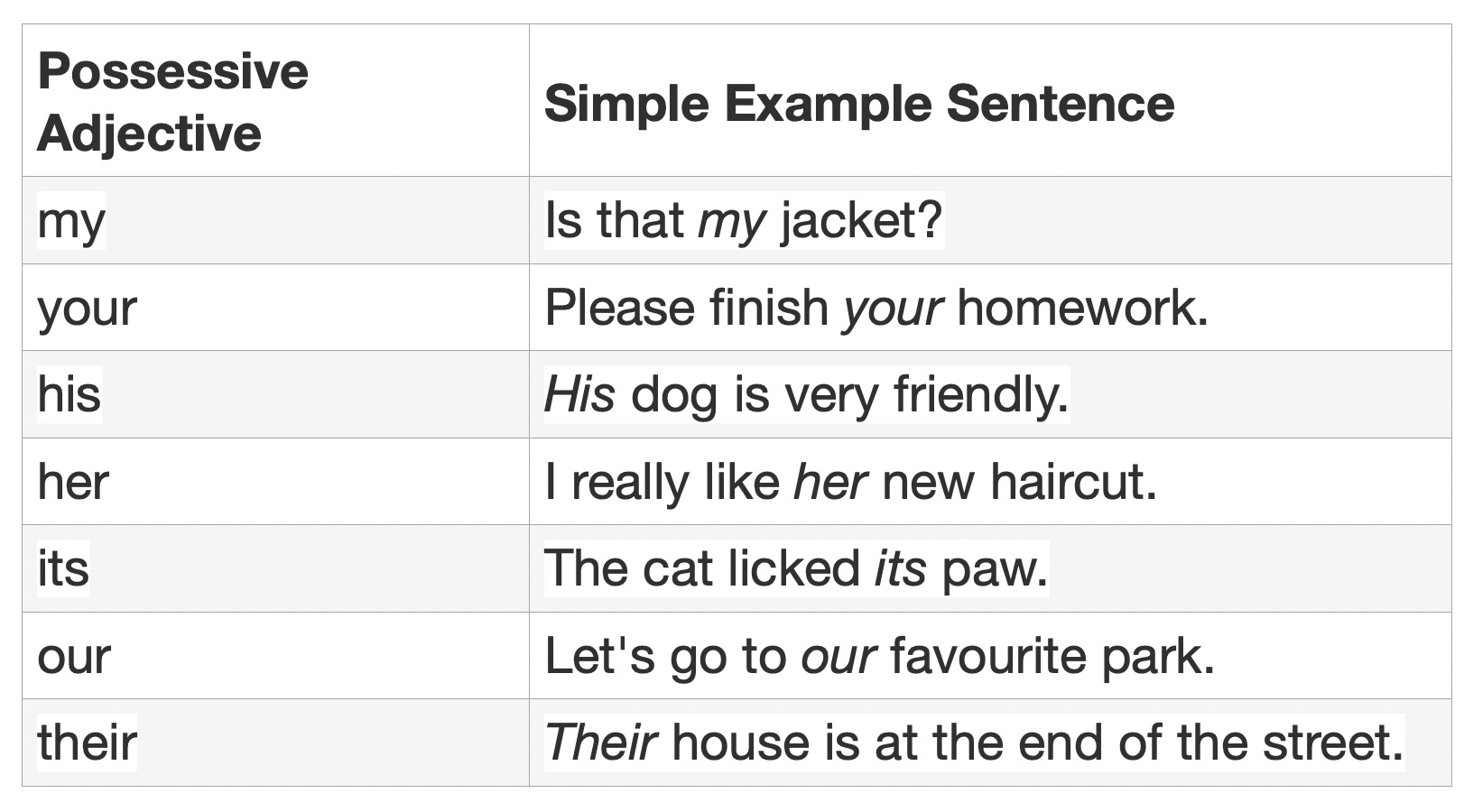- Home
- Types of Adjective
- Possessive Adjectives
What are Possessive Adjectives?
In this English grammar lesson, you’ll learn how to use possessive adjectives like my, your, his, her, its, our, and their correctly in everyday sentences.
We’ll look at common mistakes English learners make such as mixing up possessive adjective with possessive pronouns as well as covering the difference between "its" and "it's",
Video
You can also watch a video of this lesson.
Possessive Adjectives Explained
Simply put, a possessive adjective is a word that modifies a noun to show ownership or possession. Their main job is to clarify that something belongs to a specific person, animal, or thing and they are essential tools for making our sentences more precise and descriptive.
The primary benefit of using possessive adjectives is their ability to make sentences clearer by answering the question "Whose?". For instance, instead of a general statement like "That is the dog's ball,"cwe can use a possessive adjective to be more specific and direct: "That is his ball."
This simple change removes ambiguity and makes your writing flow more naturally by reducing repetition of the noun, as seen in phrases like 'the dog's ball' versus 'his ball’.
Let's take a look at the complete list of these useful words.
Complete List of Possessive Adjectives

Now that you've seen them all, let's go over two simple but critical rules for using them correctly.
Two Golden Rules for Using Possessive Adjectives
Rule 1: They Always Go Before a Noun
This is the most fundamental rule. A possessive adjective must always be followed directly by a noun (the person, place, or thing that is owned). You can't just use them by themselves.
- This is my book.
- We are in our classroom.
There can though be modifiers before the noun:
- This is my old book.
Rule 2: They Never Change
Possessive adjectives have one form and one form only. It doesn’t matter if the noun they are describing is singular (one) or plural (more than one)—the possessive adjective always stays the same.
- Her car is new. (Singular noun)
- Her cars are new. (Plural noun)
Quick Tip: Adjective vs. Pronoun
A common point of confusion is the difference between possessive adjectives (my, your, her) and possessive pronouns (mine, yours, hers).
The rule is simple: possessive adjectives must be followed by a noun, while possessive pronouns stand alone.
- That is her car. (Adjective + Noun)
- That car is hers. (Pronoun stands alone)
- Incorrect: That car is her.
Special Alert: 'Its' vs. ‘It's'
This is one of the most common mix-ups in English writing, but the rule is very straightforward once you learn it.
- Its = the possessive adjective used to show ownership.
- It's = a contraction, which is a shortened form of "it is" or "it has”.
Take a look at these examples:
- The company is proud of its new logo. (The logo belongs to the company.)
- It's a very effective logo. (It is a very effective logo.)
Recap
To make sure the main ideas stick, remember these two key takeaways:
- Possessive adjectives show who owns something.
- They always come directly before a noun.
Keep practicing, and soon you'll be using these words with complete confidence in your speaking and writing!
New! Comments
Any questions or comments about the grammar discussed on this page?
Post your comment here.




